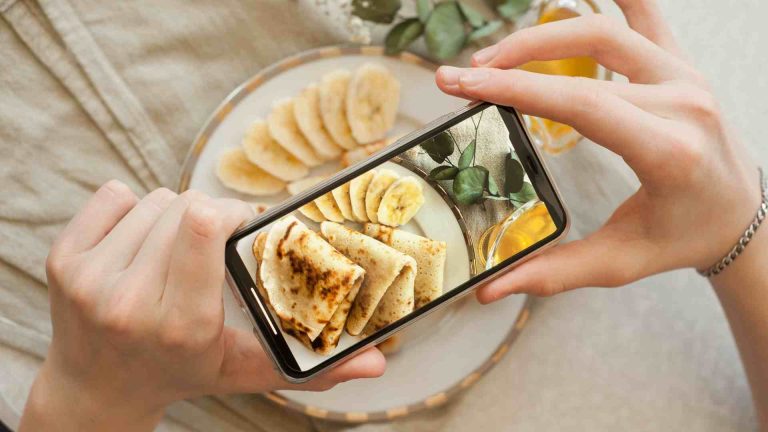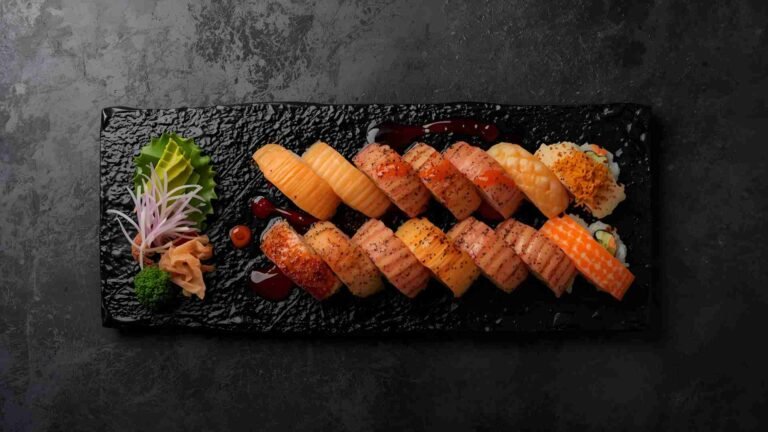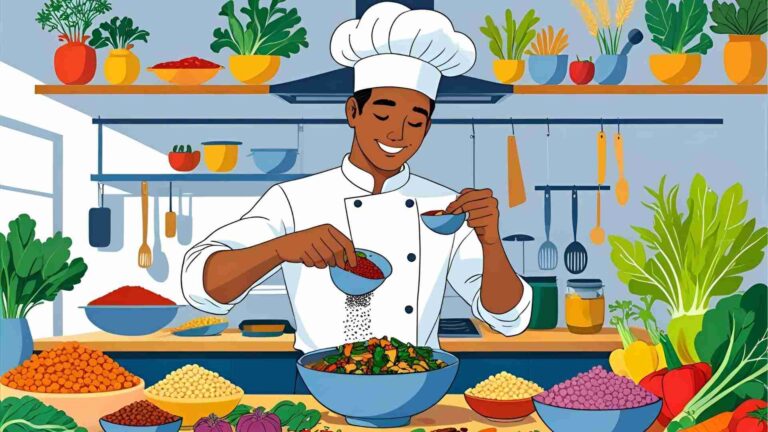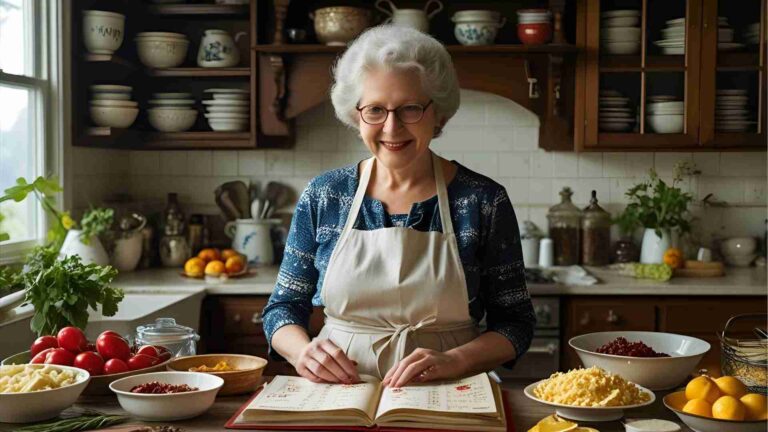Pinterest Marketing for Food Bloggers: Guide
Pinterest has emerged as a powerhouse for food bloggers seeking to expand their audience and drive traffic to their websites. With over 450 million monthly active users and billions of searches, Pinterest is a visual search engine where food-related content thrives. Its unique ability to connect users with ideas through stunning visuals and long-lasting content makes it an ideal platform for food bloggers. This guide provides an in-depth look at how food bloggers can leverage Pinterest to grow their blogs, boost engagement, and increase revenue. From optimizing profiles to mastering Pinterest SEO, creating compelling pins, and analyzing performance, we’ll cover actionable strategies to elevate your food blog.
Why Pinterest is Essential for Food Bloggers
Pinterest stands out as a visual discovery platform where users actively seek inspiration, especially for recipes and food ideas. Unlike other social media platforms where content quickly fades, Pinterest pins have a longevity of six months to a year, offering sustained exposure. Food-related searches dominate the platform, with 97% of queries being unbranded, meaning users search for generic terms like “vegan desserts” or “quick dinner recipes” rather than specific brands. This opens the door for food bloggers to capture a broad, engaged audience.
Key benefits of Pinterest for food bloggers include:
- High Traffic Potential: Pinterest drives significant referral traffic. For example, food blogs like Pinch of Yum have reported 30% of their traffic coming from Pinterest.
- Visual Appeal: Food blogs naturally align with Pinterest’s emphasis on high-quality, visually stunning images.
- Longevity: Pins remain discoverable for months, unlike fleeting posts on Instagram or Twitter.
- Engagement: Features like “Tried It” allow users to share their versions of recipes, boosting virality.
- Monetization Opportunities: 66% of Pinterest users make purchases after seeing brand pins, creating opportunities for affiliate marketing and ad revenue.
Setting Up a Pinterest Business Account
A Pinterest Business account unlocks powerful tools like analytics, ads, and Rich Pins, which are essential for maximizing your reach. Here’s how to set it up and optimize it:
Create a Business Account:
- Visit pinterest.com/business/create.
- Enter your business email and create a password.
- Complete the setup by adding your blog’s name and URL.
Optimize Your Profile:
- Profile Picture: Use a high-quality logo or image that reflects your brand.
- Display Name: Include broad keywords (e.g., “Vegan Recipe Creator”).
- About Section: Write a concise, keyword-rich bio (150 characters max) like “Easy vegan recipes for busy families. Visit [yourblog.com] for more!”
- Claim Your Website: Go to Settings > Claimed Accounts, choose a verification method, and follow the steps to link your blog. This enables Rich Pins and analytics tracking.
Enable Rich Pins:
- Install a recipe plugin like Tasty Pins or Recipe Card Blocks on your WordPress site.
- Verify Rich Pins through Pinterest’s settings to sync recipe metadata (ingredients, cooking time, servings).
| Rich Pin Type | What It Shows |
|---|---|
| Recipe | Ingredients, cooking time, servings |
| Article | Headline, description, author |
| Product | Price, availability, purchase links |
Crafting a Pinterest Strategy
A well-defined strategy is crucial for success on Pinterest. Follow these steps to build one tailored to your food blog:
Define Your Niche
Focus on a specific niche to stand out. Instead of “recipes,” target “quick vegan dinners” or “gluten-free desserts.” A narrow focus helps attract a dedicated audience.
Set SMART Goals
Use the SMART framework (Specific, Measurable, Achievable, Relevant, Time-bound) to guide your efforts. Examples:
| Goal Type | Example |
|---|---|
| Specific | Increase Pinterest-driven blog traffic by 50% |
| Measurable | Gain 1,000 new Pinterest followers |
| Achievable | Create 20 new pins per week |
| Relevant | Boost recipe page views by 30% |
| Time-bound | Achieve goals within 6 months |
Break Goals into Actionable Steps
- Weekly: Design 5 new pins for your top-performing recipe.
- Monthly: Join 3 niche-specific group boards or Tailwind Communities.
- Quarterly: Analyze top pins and replicate their style for 10 new pins.
Plan Seasonal Content
Pinterest users plan ahead for holidays and trends. Create a content calendar to align with key events:
| Month | Focus | Content Ideas |
|---|---|---|
| January | Healthy Eating | Meal prep, low-carb recipes |
| February | Valentine’s Day | Romantic dinners, chocolate desserts |
| March | St. Patrick’s Day | Irish-inspired dishes, green foods |
| April | Easter | Spring salads, egg recipes |
| May | Cinco de Mayo | Mexican-inspired dishes |
| June | Summer BBQ | Grilling recipes, cold drinks |
| July | Independence Day | Patriotic desserts, picnic foods |
| August | Back to School | Quick lunches, snack ideas |
| September | Fall Flavors | Pumpkin spice, apple recipes |
| October | Halloween | Spooky treats, party snacks |
| November | Thanksgiving | Turkey recipes, side dishes |
| December | Christmas, Hanukkah | Holiday cookies, festive meals |
Mastering Pinterest SEO
Pinterest operates as a search engine, so optimizing for SEO is critical to ensure your pins are discoverable. Here’s how to do it:
Keyword Research
- Use Pinterest’s search bar to find trending terms. Type “vegan recipes” and note suggested searches like “vegan recipes dinner” or “vegan recipes easy.”
- Check Pinterest Trends (available in Business accounts) for search volume data.
- Analyze competitors’ boards and pins for keyword ideas.
Keyword Placement
Incorporate keywords strategically:
| Location | Keyword Type | Example |
|---|---|---|
| Bio | Broad | Vegan recipe creator |
| Board Title | Specific | Easy Vegan Curry Recipes |
| Pin Title | Detailed | Vegan Red Curry Ramen Noodle Bowls |
Best Practices
- Pin Descriptions: Write 100-500 character descriptions with 3-5 keywords. Example: “Try this vegan red curry ramen for a quick, flavorful dinner. Perfect for busy weeknights! #veganrecipes #quickdinner.”
- Avoid Overusing Hashtags: Use 1-2 relevant hashtags only if keywords don’t fit naturally.
- Rich Pins: Ensure they’re enabled to provide metadata that boosts search visibility.
- Alt Text: Add descriptive alt text (under 125 characters) to images for accessibility and SEO.
Creating High-Quality Pins
Pins are the heart of Pinterest marketing. Compelling visuals and strategic design drive clicks and engagement.
Photography Tips
- Lighting: Use natural light for vibrant, appetizing photos.
- Angles: Experiment with overhead, 45-degree, or close-up shots.
- Backgrounds: Keep them simple to highlight the food.
- Ingredients: Showcase fresh ingredients to convey quality.
Design Guidelines
- Aspect Ratio: Use a 2:3 ratio (1000x1500px is ideal; avoid smaller than 600x900px).
- Text Overlays: Add clear, readable text with fonts like Montserrat or Playfair Display. Example: “Easy Vegan Curry in 30 Min!”
- Branding: Include your logo or URL subtly in the image.
- Tools: Use Canva or BeFunky for quick, professional designs.
Pin Elements
| Element | Best Practice |
|---|---|
| Image | High-quality, vertical (2:3 ratio) |
| Text Overlay | Easy to read, complements image |
| Logo/URL | Subtle branding for recognition |
| Title | Clear, keyword-rich (up to 100 characters) |
| Description | Concise, with call-to-action (100-500 characters) |
Video Pins
Video pins drive 3x more engagement than static pins. Create 6-15 second videos:
- Show the cooking process or final dish.
- Add text overlays for clarity.
- Use tools like Canva or Adobe Express for editing.
Optimizing Your Blog for Pinterest
Your blog should be Pinterest-friendly to maximize traffic and engagement.
Blog Content Optimization
- Images: Use 2:3 ratio images (1000x1500px) for all recipe posts.
- Rich Pins: Enable them via plugins like Tasty Pins or Recipe Card Blocks.
- Pin Buttons: Add “Pin It” buttons to images using plugins like Hubbub or Grow. Ensure sticky social sharing buttons are visible on mobile.
- Alt Text: Write descriptive alt text for accessibility and SEO (e.g., “Vegan red curry ramen in a white bowl”).
- Watermarks: Add subtle watermarks with your logo to protect content and drive brand recognition.
Plugin Recommendations
| Plugin | Features | Price |
|---|---|---|
| Tasty Pins | Optimizes images, adds Pinterest descriptions, disables pinning for non-relevant images | $29/year |
| Recipe Card Blocks | Custom Pinterest images, Rich Pins, social sharing buttons | Free; Pro: $59/year |
| Hubbub | Pin buttons, social sharing, analytics integration | $49/year |
| Grow | Pinterest-optimized descriptions, social sharing | Free; Premium: $89/year |
Organizing Pinterest Boards
Well-organized boards enhance user experience and improve discoverability.
Creating Themed Boards
- Themes: Create specific boards like “Quick Vegan Dinners” or “Gluten-Free Desserts.”
- Titles: Use keyword-rich titles (e.g., “Easy Vegan Curry Recipes”).
- Seasonal Boards: Make boards for holidays (e.g., “Christmas Desserts”).
- Consistency: Ensure all pins align with the board’s theme.
Using Board Sections
Divide large boards into sections for better organization:
- Example Board: “Holiday Recipes”
- Sections: Christmas (festive desserts), Thanksgiving (turkey and sides), Easter (spring brunch), Halloween (spooky treats).
Board Organization
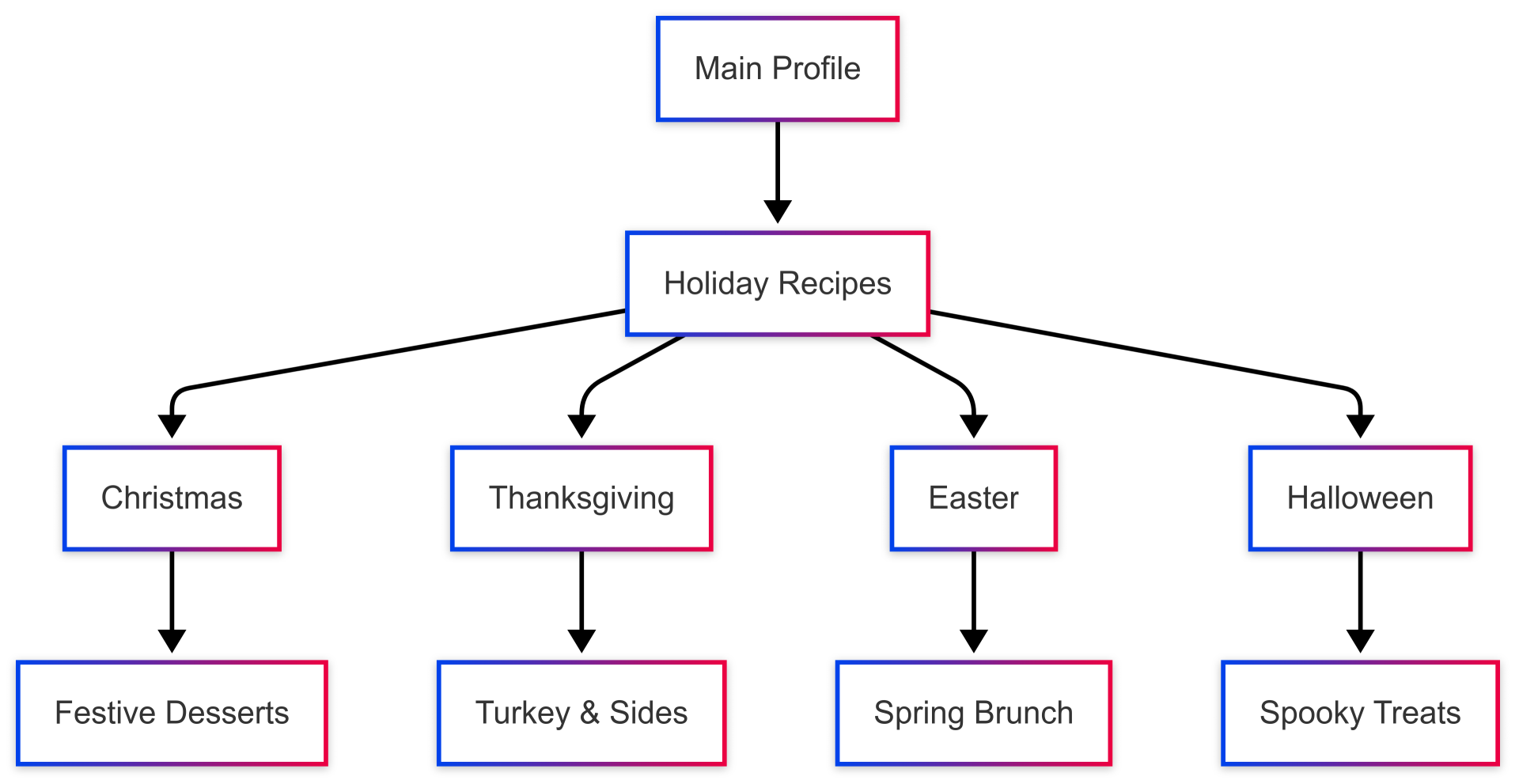
Leveraging Group Boards and Communities
Collaborating with others amplifies your reach.
Group Boards
- Find Boards: Use tools like PinGroupie to locate niche-relevant group boards.
- Rules: Follow board guidelines to avoid being removed.
- Engagement: Repin others’ content to build relationships.
Tailwind Communities
- Join Tailwind Communities (tribes) for content sharing.
- Focus on niche-specific tribes (e.g., vegan recipes).
- Share your pins and repin others’ to boost visibility.
Pinterest Analytics: Measuring Success
Pinterest Analytics provides insights to refine your strategy. Key metrics include:
| Metric | What It Tells You | How to Use It |
|---|---|---|
| Pin Impressions | Content reach | Assess visibility |
| Website Link Clicks | Direct traffic | Measure effectiveness |
| Saves | Recipe interest | Guide content creation |
| Outbound Click Rate | CTA effectiveness | Optimize pin design/descriptions |
Using Analytics
- Top Pins: Identify high-performing pins and replicate their style.
- Audience Insights: Tailor content to your audience’s interests (e.g., vegan, gluten-free).
- Pinterest Trends: Plan content around trending topics like tropical flavors or comfort food mashups.
- Google Analytics: Track Pinterest sessions to measure referral traffic.
Advanced Features: Video and Shopping Pins
Video Pins
- Length: 6-15 seconds.
- Content: Show cooking steps or final dishes.
- Tools: Canva, Adobe Express, or smartphone apps.
- Text Overlays: Add instructions or recipe names.
Shopping Pins
- Shoppable Recipe Pins: Partner with grocery chains for ingredient purchases.
- Product Rich Pins: Promote kitchen tools with price and availability details.
- Try-On Pins: Use AR to showcase gadgets virtually.
| Feature | Benefit | Example |
|---|---|---|
| Shoppable Recipe Pins | Direct ingredient purchases | Albertsons partnership |
| Product Rich Pins | Promote kitchen tools | Price/stock for appliances |
| Try-On Pins | Virtual product testing | AR for kitchen gadgets |
Pinterest Ads for Food Bloggers
Pinterest Ads can accelerate growth. Ad types include:
| Ad Type | Best For | Key Features |
|---|---|---|
| Standard Pins | Recipe photos | Static images with descriptions |
| Video Pins | Cooking tutorials | Short, autoplay videos |
| Carousel Pins | Multiple dishes | Up to 5 swipeable images |
| Shopping Pins | Cookbooks, tools | Product details and pricing |
Creating Effective Ads
- Goals: Set clear objectives (e.g., traffic, conversions).
- Targeting: Use Pinterest’s audience targeting (e.g., “vegan food enthusiasts”).
- Visuals: Use high-quality, 2:3 ratio images.
- Descriptions: Write compelling, keyword-rich text.
- Timing: Launch seasonal campaigns 2-3 months early.
Pricing
Pinterest Ads operate on a cost-per-click (CPC) or cost-per-thousand-impressions (CPM) model. Typical CPC ranges from $0.10-$1.50, and CPM ranges from $2-$5, depending on targeting and competition. Budgets can start as low as $10/day.
Seasonal and Trend-Based Marketing
Aligning with trends and seasons boosts relevance. Current food trends include:
- Tropical Flavors: Pineapple, coconut, mango.
- Melty Mashups: Comfort food combos like mac-and-cheese burgers.
Use Pinterest search to identify rising trends and incorporate them into your pins and blog content.
Measuring ROI
Track conversions to calculate return on investment (ROI):
Set Up Tracking:
- Install the Pinterest Tag on your site.
- Use Pinterest Tag Helper to verify.
- Add UTM codes to URLs (e.g., ?utm_source=pinterest&utm_medium=recipe&utm_campaign=vegan).
Key Metrics:
- Conversion Rate: (Conversions / Total Visitors) x 100
- Revenue per Pin: Total Revenue / Number of Pins
- Cost per Action: Total Spend / Number of Conversions
Long-Term Benefits:
- Brand recognition from viral pins.
- Increased email subscribers via blog traffic.
Troubleshooting Common Issues
Account Issues
- Restrictions: Avoid over-pinning (limit to 15-20 pins/day).
- Login Troubles: Use password reset or connected accounts.
- Suspensions: Verify your domain and follow Pinterest’s guidelines.
Copyright Protection
- Do: Add comments when pinning, pin from original sources, watermark images.
- Don’t: Copy content verbatim, use images without permission, ignore terms.
Preparing for Future Changes
Pinterest evolves rapidly. Stay ahead by:
- Following Pinterest’s official blog and engineering updates.
- Testing new features like Showcase Ads or Quiz Ads.
- Adapting to trends like increased video content or AI tools (e.g., Pic2Recipe).
- Maintaining brand consistency while experimenting.
Recent Updates
| Update | How to Use It |
|---|---|
| Showcase Ads | Create immersive recipe ads |
| Quiz Ads | Design food-related quizzes |
| Idea Pins (Ad-only) | Develop short recipe videos |
| Enhanced Recipe Search | Use qualifiers in descriptions |
Case Study: Growing from 400k to 1 Million Views
A food blogger increased their Pinterest views from 400,000 to 1 million in two months using these strategies:
- Pinned 15-20 times daily with high-quality, 2:3 ratio images.
- Optimized keywords in pin titles, descriptions, and boards.
- Prioritized Pinterest-specific keywords over Google’s.
- Used Rich Pins and Tasty Pins for better metadata.
This approach highlights the power of consistency, quality, and SEO optimization.
Conclusion
Pinterest is a goldmine for food bloggers, offering unparalleled opportunities to drive traffic, engage audiences, and monetize content. By optimizing your profile, creating high-quality pins, leveraging SEO, and analyzing performance, you can transform your food blog into a thriving brand. Embrace video pins, seasonal trends, and advanced features like shopping ads to stay ahead. With dedication and strategic planning, Pinterest can propel your food blog to new heights, connecting your recipes with millions of eager home cooks worldwide.
Please share this Pinterest Marketing for Food Bloggers: Guide with your friends and do a comment below about your feedback.
We will meet you on next article.
Until you can read, How to Increase Your Website Traffic with a Recipe Index

